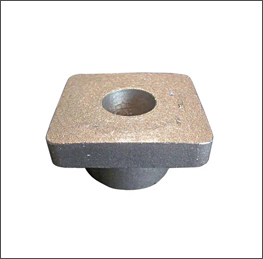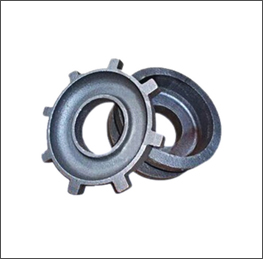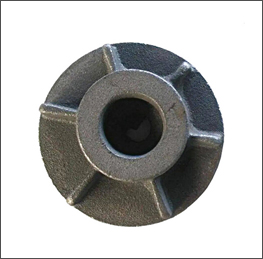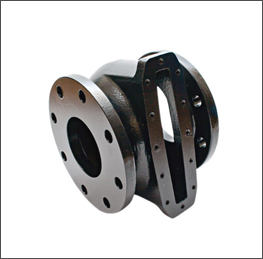Sand Casting For Ferrous Metals: Manufacturer, Supplier.
Indo German Shell Cast stands as a prominent Sand Casting Unit. As a company with ideal infrastructure, it specializes in manufacturing high quality steel castings across various grades such as stainless steel (SS), S G Iron, delivering fully machined, ready to use components. The group is committed to superior product quality, timely delivery, exceptional customer support, and manufacturing precision critical components for major industries such as pharmaceutical industry, railway systems,cement industries and many more.
Process:
Sand casting is a widely utilized manufacturing process for producing ferrous metal components, characterized by its versatility and adaptability to various shapes and sizes. The process begins with the creation of a mold, typically made from a mixture of sand, clay and water which is shaped to form the desired shape of the final product.
The sand is compacted around a pattern, which is a replica of the object to be cast. Once the mold is formed, the pattern is removed, leaving a cavity that will be filled with molten metal. Ferrous metals, such as cast iron and steel, are commonly used in sand casting due to their favorable properties including good fluidity and solidification characteristics. The molten metal is poured into the mold cavity, where it cools and solidifies, taking on the shape of the mold. After the metal has cooled sufficiently, the mold is broken apart to reveal the cast component. This process allows for the production of detailed designs and shapes that may be challenging to achieve with other manufacturing methods. Sand casting is particularly effective for producing large parts, as the molds can be made to accommodate significant dimensions.
Additionally, the process can be scaled for both small and large production runs, making it suitable for a variety of applications, from automotive components to industrial machinery. The use of ferrous metals in sand casting also necessitates careful control of the pouring temperature and cooling rates to minimize defects such as shrinkage.
Furthermore, the sand used in the casting process can be reused multiple times, making it a cost effective option for manufacturers.
Benefits:
- Material Variety: Sand casting is compatible with various ferrous metals such as cast iron and steel, enabling manufacturers to select materials based on specific application requirements.
- Scalability: The process can be easily scaled for both small batch production and large scale manufacturing, providing flexibility to meet varying production demands.
- Good Surface Finish: Sand casting can achieve a satisfactory surface finish which often requires minimal post processing, reducing overall production time and costs.
- High Tolerance Levels: The technique allows for the production of components with precise dimensions, ensuring that parts meet stringent tolerances required in various applications.
- Reusability of Materials: The sand used in the casting process can be reclaimed and reused multiple times, minimizing waste and reducing material costs.
- Ability to Cast Complex Shapes: Sand casting can produce difficult designs and complex shapes that may be difficult or impossible to achieve with other manufacturing methods.
- Good Thermal Properties: Ferrous metals cast using this method exhibit excellent thermal conductivity, making them suitable for applications that require heat resistance. casting is employed to manufacture components such as brackets, housings and structural parts that require lightweight yet strong materials.
Applications:
- Industrial Machinery: Many parts for industrial machines such as housings, gears and brackets, are manufactured using sand casting due to its ability to create complex shapes and robust components.
- Pipelines and Valves: Sand casting is employed to manufacture various pipeline fittings and valves, ensuring reliable performance in fluid transport systems across different industries.
- Construction Equipment: Components like excavator buckets, crane parts and other heavy machinery elements are often produced through sand casting, benefiting from the process's ability to handle large sizes.
- Railway Components: Critical railway parts such as wheel hubs and couplings, are manufactured using sand casting, ensuring safety and reliability in transportation systems.
- Power Generation: Components for turbines and generators in power plants are often produced via sand casting, as the process can accommodate the designs required for efficient energy production.



